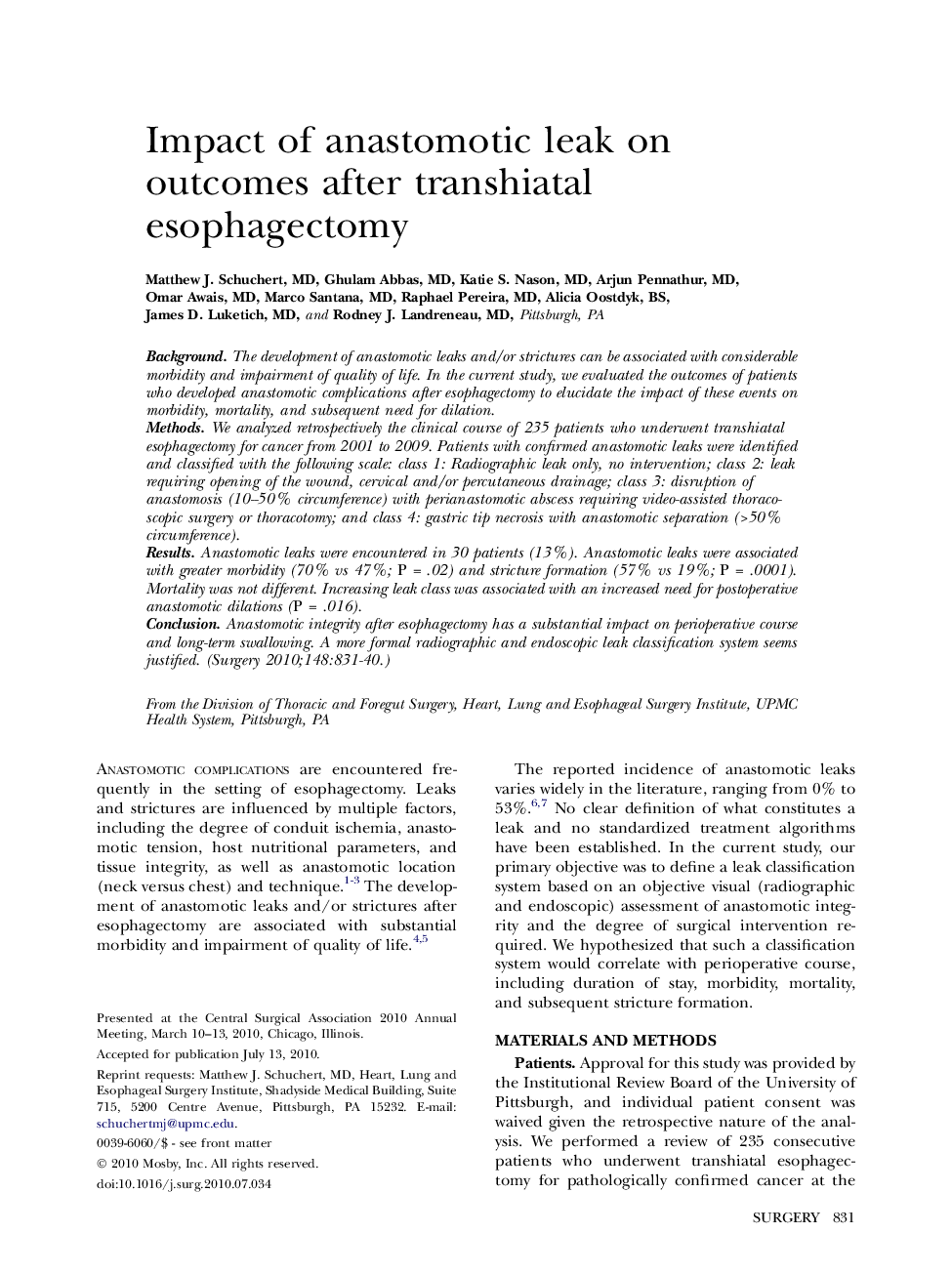| Article ID | Journal | Published Year | Pages | File Type |
|---|---|---|---|---|
| 4309057 | Surgery | 2010 | 10 Pages |
BackgroundThe development of anastomotic leaks and/or strictures can be associated with considerable morbidity and impairment of quality of life. In the current study, we evaluated the outcomes of patients who developed anastomotic complications after esophagectomy to elucidate the impact of these events on morbidity, mortality, and subsequent need for dilation.MethodsWe analyzed retrospectively the clinical course of 235 patients who underwent transhiatal esophagectomy for cancer from 2001 to 2009. Patients with confirmed anastomotic leaks were identified and classified with the following scale: class 1: Radiographic leak only, no intervention; class 2: leak requiring opening of the wound, cervical and/or percutaneous drainage; class 3: disruption of anastomosis (10–50% circumference) with perianastomotic abscess requiring video-assisted thoracoscopic surgery or thoracotomy; and class 4: gastric tip necrosis with anastomotic separation (>50% circumference).ResultsAnastomotic leaks were encountered in 30 patients (13%). Anastomotic leaks were associated with greater morbidity (70% vs 47%; P = .02) and stricture formation (57% vs 19%; P = .0001). Mortality was not different. Increasing leak class was associated with an increased need for postoperative anastomotic dilations (P = .016).ConclusionAnastomotic integrity after esophagectomy has a substantial impact on perioperative course and long-term swallowing. A more formal radiographic and endoscopic leak classification system seems justified.
